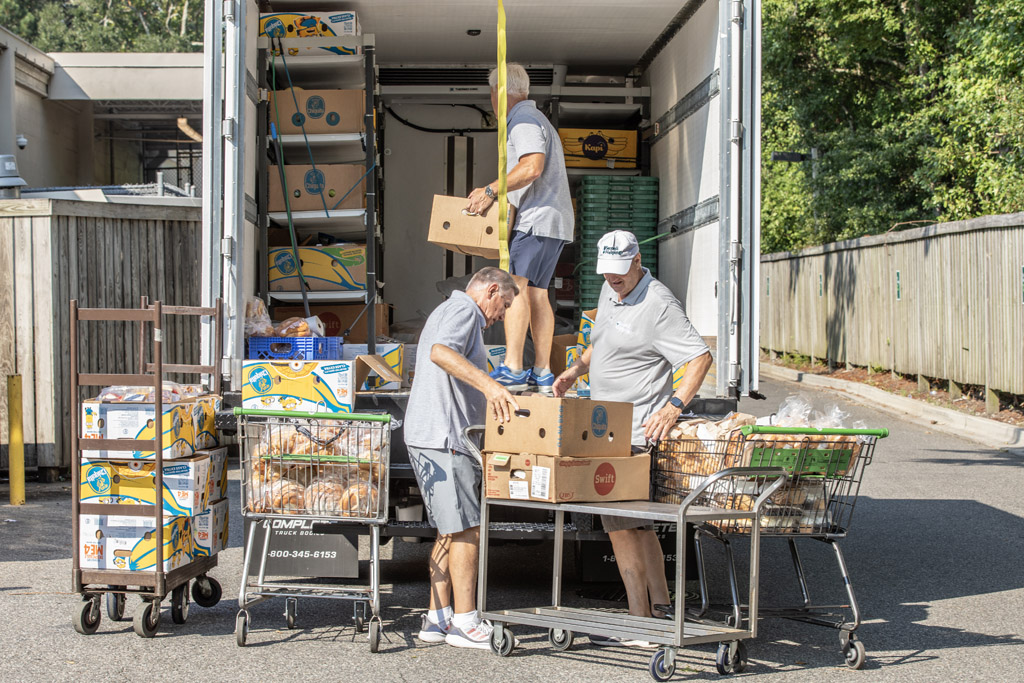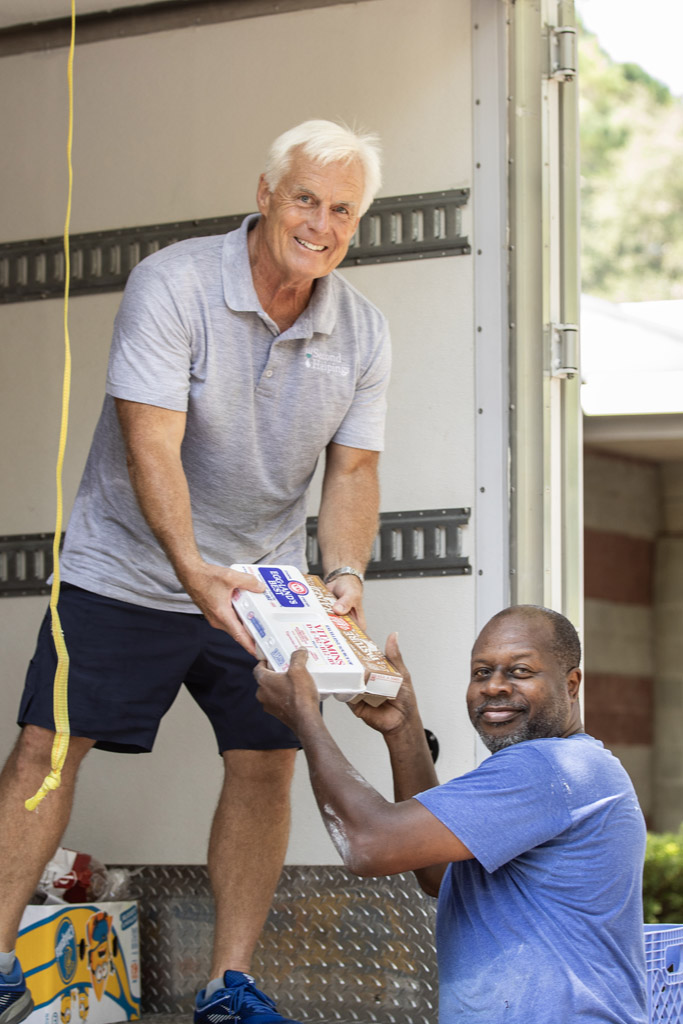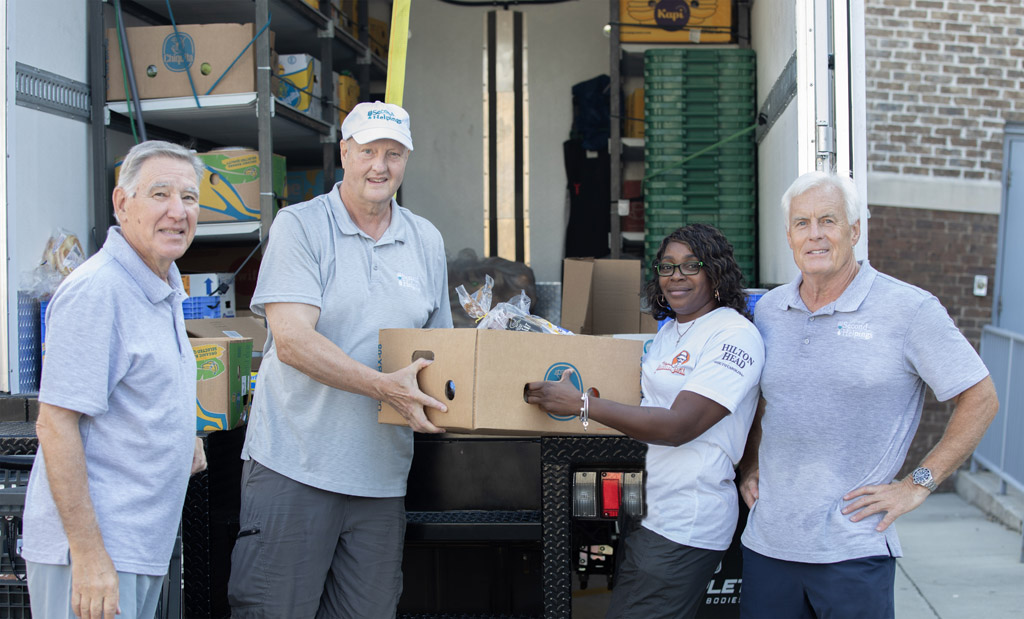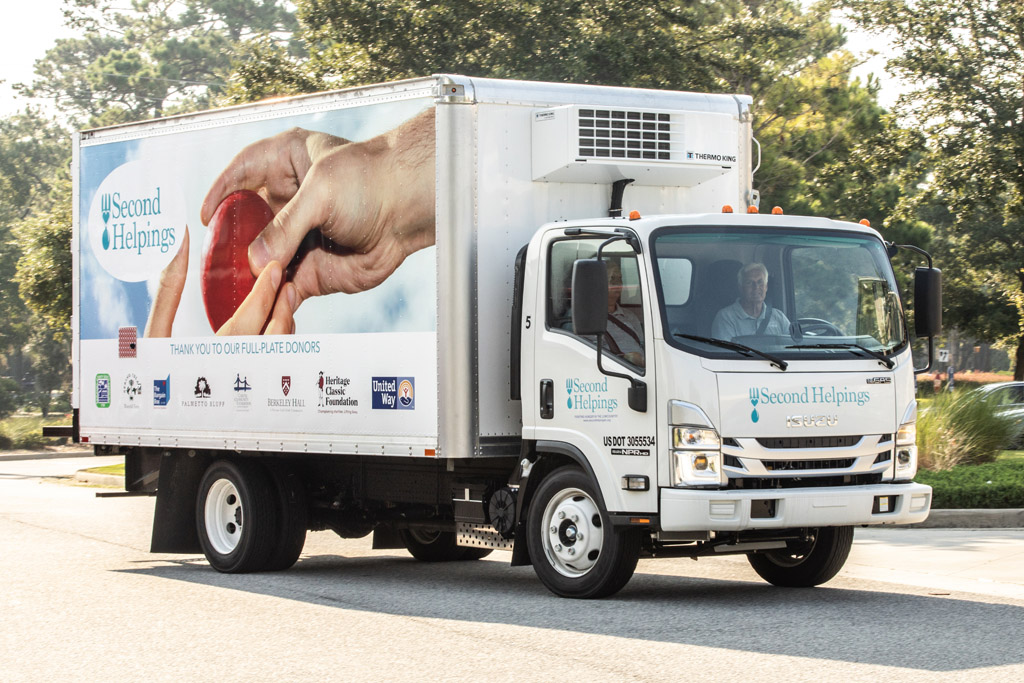When you think about “second helpings,” it’s likely that images of eating a bit too much at holiday meals or Sunday brunches with the family come to mind. Here in the Lowcountry, the term has a much more selfless connotation. Second Helpings, a United Way organization, is a nonprofit food rescue organization whose goal is to eliminate hunger in our communities.
Volunteers collect and distribute food which would otherwise end up in landfills. With more than 400 volunteers, the organization delivers 3.2 million pounds of food annually– free of charge – to more than 50 agencies in Beaufort, Jasper, and Hampton counties.
While it might not seem so upon a casual glance, there are numerous people in our communities who lack sufficient food. In Beaufort, Jasper, and Hampton counties alone, a startling 29,440 people lack consistent access to food to sustain a healthy life. This number includes the working poor, the homeless, the unemployed, the disabled, children, and the elderly. Admirably, the folks at Second Helpings took more than a casual glance.

Dan Clare, Bob Poveromo and Steve Eberly, volunteers for Second Helpings, load up the truck with donations from Publix.
In 1991, Guenther and Louise Hecht witnessed food being thrown out at area grocery stores on Hilton Head Island. They were disturbed by what they deemed wasteful, so they began to rescue that food and distribute it to trusted agencies, who would then distribute it to their deserving and needy clients. The first milestone – rescue and delivery of one million pounds of food – was reached five and a half years later.
Recently Second Helpings reached another major milestone – they rescued and distributed their 50 millionth pound of food. To put it into perspective, that number (impressive enough) translates into an even more impressive impact: that’s enough food for 40 million meals over 31 years.

Second Helpings volunteer Dan Clare hands off food donations to Clemson Polite at The Boys & Girls Club. .
“We are able to achieve this kind of impact as a result of a three-tiered system,” said Executive Director Marcus Tanner. “Like a tripod … if you take one of those away, the other two sides would fall.”
While Second Helpings has grown over the years, the foundations of that three-tiered system remain the same. These include:
Volunteers, more than 400 of them. These volunteers rescue and distribute food, work with agency partners, plan and represent their organization at community events, and perform many administrative functions.
Agency partners. Community organizations where Second Helpings provides every pound of food free of charge. These include more than 50 local food pantries, soup kitchens, and family programs.

VelVonda Rutledge, receiver at Kroger, helps the guys load up on a Tuesday morning.
Donors. Second Helpings is fueled by grants and private donations. The private donations include both money and food. The food comes in from local grocery stores, locals who purposefully buy extra and donate it, and also from tourists whose vacations are over, and they have leftover food that they don’t need or don’t want to take home.
“Every single pound of food that we rescue is accounted for,” Tanner said. “We know not only where it’s going, but where it needs to go, and in the correct amounts. And because we are good stewards, for every dollar that we take in, we are able to put more than five meals back out into the community. We want the community to know that you don’t have to give big to make a big impact. When was the last time you went out to eat or grocery shopping and you were able to get five meals for a dollar?”
Aside from the agency partnerships, Second Helpings utilizes other great programs to distribute food to those in need.
“One of our programs is called Fill the Need, which is actually at the Palmetto Breeze bus depot,” Tanner said. “About eight years ago, the executive directors of Palmetto Breeze and Second Helpings recognized a need among the people who ride these buses for hours every day just to get to Hilton Head and Bluffton for their jobs. By the time these commuters get home, grocery stores are usually closed, or if there is even a grocery store in their area, many times they have no transportation to get there.”
So, the big hearts at Second Helpings began to brainstorm how they could give those hospitality, retail, landscaping, and maintenance workers who ride the Breeze buses some staples, like produce and proteins, so that when they get home after working all week, they have something to make it through the weekend. Second Helpings delivers groceries to the Palmetto Breeze bus depot three or four times a week, so that every Thursday, the bus riders can “shop” for their weekend grocery supply, not just for themselves, but for their families. Now celebrating its seventh year of operations, Fill the Need is one of the Second Helpings’ best-known programs.
Another program, the Healthy Food Initiative, began nearly a decade ago, when Second Helpings partnered with Dempsey Farms to provide fresh produce to supplement rescued food. Through fundraising, grants, and individual donations, Second Helpings now acquires healthy food from local farmers at Dempsey Farms and the Gullah Farms Cooperative on St. Helena Island, where produce is harvested, packaged, and delivered to the agencies. Waterfall Farm on Spring Island also donates part of its harvest.
They also partner with wholesalers and food donors. Between growing seasons, and whenever there is a need, Second Helpings purchases food from a wholesaler and delivers produce to partner agencies. Second Helpings volunteers spend part of their weekends at the Beaufort Farmers’ Market collecting donated fresh produce to deliver to agencies.
They also partner with local food donors to purchase food at discount prices.
The Second Helpings partner agencies place their Healthy Food Initiative orders based on how many people they serve and, along with the food donated from grocery stores and individuals, Second Helpings trucks deliver their orders, and the partner agencies distribute the food to their clients.
Tanner said the organization was recently awarded a grant from Colleton River Charity Fund for the Healthy Food Initiative. Another recent grant, from the Gimbel Foundation, will go to purchase proteins to provide to communities across the agency’s service area.
“Another popular and growing program is our Post-Vacation Food Donation,” Tanner said. “We have really bolstered this program with social media, and in just one year, this program has taken off.”
As we know, Hilton Head Island attracts 2.5 million tourists every year – many who stay in properties where they cook many of their meals. Starting in 2023, Second Helpings now offers departing vacationers the opportunity to drop off their unopened, nonperishable leftover food items on their way off the island.
Each Saturday morning from Memorial Day through Labor Day, vacationers can pull into the Grayco Hardware and Home parking lot on Palmetto Bay Road from 7:30 to 10 a.m., hand their food to a grateful volunteer, obtain a receipt and more information about Second Helpings, and even take one last souvenir photo with the Second Helpings truck.
Another drop-off spot is in Coligny Plaza on the island’s south end, at FISH Casual Coastal Seafood. Food may be dropped off Fridays and Saturdays through Labor Day.
Second Helpings not only depends on food and monetary donations to help feed the needy in their service area, but they also need volunteers. In 2022, Second Helpings refrigerated trucks were driven 86,441 miles by volunteers to rescue and distribute food. These volunteers ran 1,451 routes during the year, operating six days a week, including most holidays.
“We’re always looking for additional volunteers to drive our trucks or be a helper on the truck,” Tanner said. “All you need is a driver’s license. If you can drive a U-Haul, then you can drive a Second Helpings truck. On average, we’ve got six routes running in all three locations – Hilton Head, Bluffton, and Beaufort – every day. This kind of dedication by our volunteers allows us to be able to rescue a whole lot of food and put it in the hands of those that need it.”
To volunteer, to donate or to learn more, visit SecondHelpingsLC.org, find them on Facebook, or call 843-689-3689.



